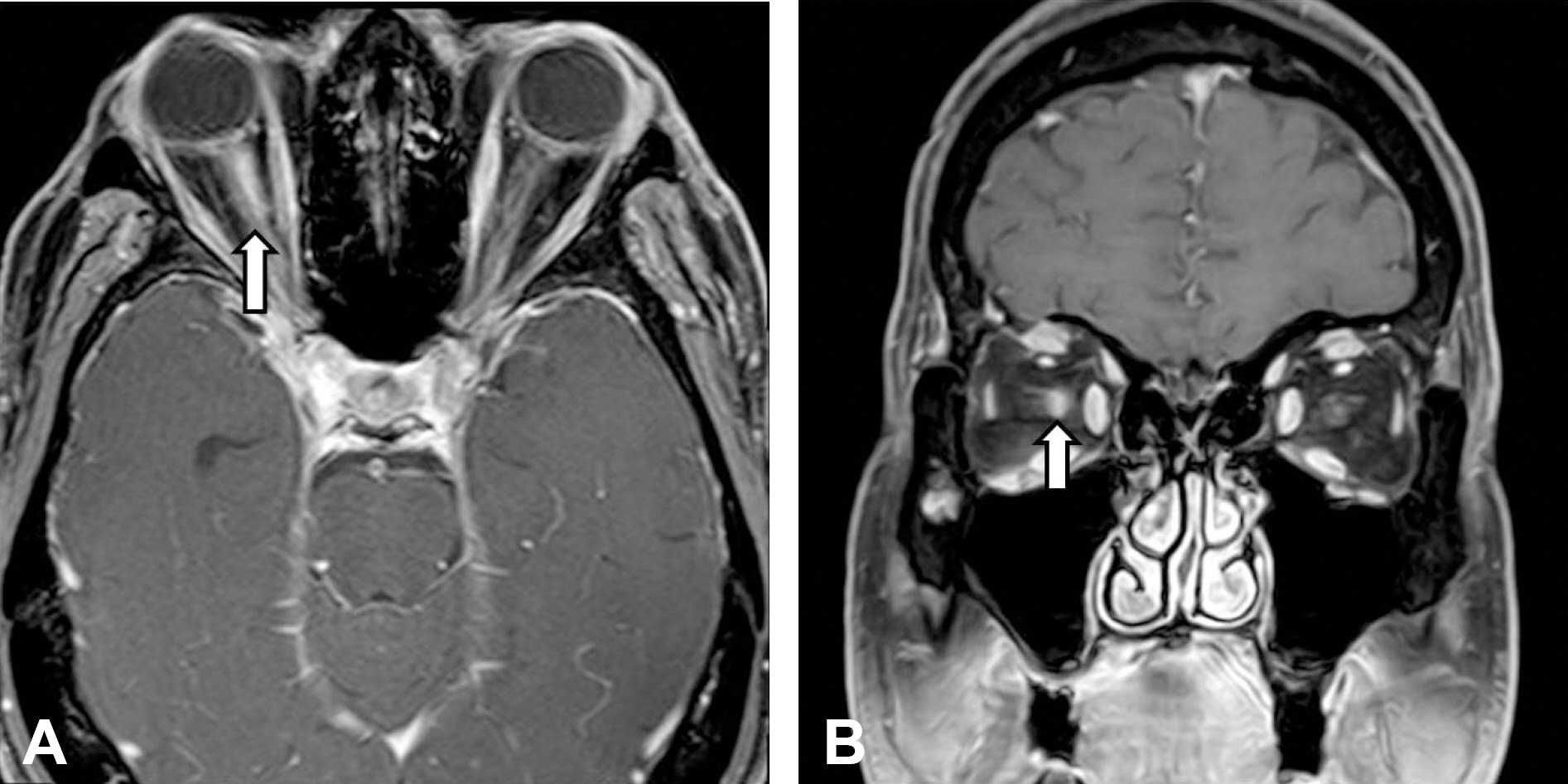Korean J Clin Neurophysiol.
2013 Jun;15(1):13-18. 10.14253/kjcn.2013.15.1.13.
Subacute Inflammatory Demyelinating Polyneuropathy Combined with Optic Neuritis
- Affiliations
-
- 1Department of Neurology, Inje University Haeundae Paik Hospital, Busan, Korea. neurof@naver.com
- 2Department of Neurology, Dong-A University Hospital, Busan, Korea.
- KMID: 2225195
- DOI: http://doi.org/10.14253/kjcn.2013.15.1.13
Abstract
- It was sometimes difficult to differentiate between acute-onset chronic inflammatory demyelinating polyneuropathy (A-CIDP) and subacute inflammatory demyelinating polyneuropathy (SIDP). The CNS involvement of these polyneuropathies has rarely reported in the literature. We present the case of a 42-year-old man who developed rapidly developing inflammatory demyelinating polyneuropathy followed by right optic neuritis. This case showed progressive motor weakness and sensory dysfunction with time to nadir at 8 weeks, demyelination in nerve conduction study, no other etiology of neuropathy, no relapse during follow-up of 18 months, good response to steroid and complete recovery which favor SIDP more than A-CIDP. We experienced the case of SIDP associated with optic neuritis.
Keyword
MeSH Terms
Figure
Reference
-
1.Oh SJ., Kurokawa K., de Almeida DF., Ryan HF Jr., Claussen GC. Subacute inflammatory demyelinating polyneuropathy. Neurology. 2003. 61:1507–1512.
Article2.Laura M., Leong W., Murray NM., Ingle G., Miszkiel KA., Altmann DR, et al. Chronic inflammatory demyelinating polyradiculoneuropathy: MRI study of brain and spinal cord. Neurology. 2005. 64:914–916.
Article3.Stojkovic T., de Seze J., Hurtevent JF., Arndt C., Beaume A., Hache JC, et al. Visual evoked potentials study in chronic idiopathic inflammatory demyelinating polyneuropathy. Clin Neurophysiol. 2000. 111:2285–2291.
Article4.Gartzen K., Katzarava Z., Diener HC., Putzki N. Peripheral nervous system involvement in multiple sclerosis. Eur J Neurol. 2011. 18:789–791.
Article5.Misawa S., Kuwabara S., Mori M., Hayakawa S., Sawai S., Hattori T. Peripheral nerve demyelination in multiple sclerosis. Clin Neurophysiol. 2008. 119:1829–1833.
Article6.Holtkamp M., Zschenderlein R., Bruck W., Weber JR. Chronic inflammatory demyelinating polyradiculoneuropathy with histologically proven optic neuritis. Acta Neuropathol. 2001. 101:529–531.
Article7.Berger T., Weerth S., Kojima K., Linington C., Wekerle H., Lassmann H. Experimental autoimmune encephalomyelitis: the antigen specificity of T lymphocytes determines the topography of lesions in the central and peripheral nervous system. Lab Invest. 1997. 76:355–364.8.Ruts L., Drenthen J., Jacobs BC., van Doorn PA. Distinguishing acute-onset CIDP from fluctuating Guillain-Barre syndrome: a prospective study. Neurology. 2010. 74:1680–1686. 9. Chowdhury D, Arora A. Axonal Guillain-Barre syndrome: a critical review. Acta Neurol Scand 2001;103: 267-277.
Article9.Kim DH., Yoon YC., Lee KK., Kwon OS. Guillain-Barre syndromes accompanied by optic neuritis. J Korean Neurol Assoc. 1997. 15:1199–1202.
- Full Text Links
- Actions
-
Cited
- CITED
-
- Close
- Share
- Similar articles
-
- Optic neuritis and multiple cranial neuropathies in patient with chronic inflammatory demyelinating polyneuropathy
- Two Cases of Atypical Optic Neuritis
- A Case of Optic Nerve Decompression in a Patient with Retrobulbar Neuritis Secondary to Paranasal Sinusitis
- Optic Neuritis after Infliximab Treatment in a Patient with Ulcerative Colitis
- The Combined Peripheral and Central Demyelinating Disease Associated with Pulmonary Tuberculosis



